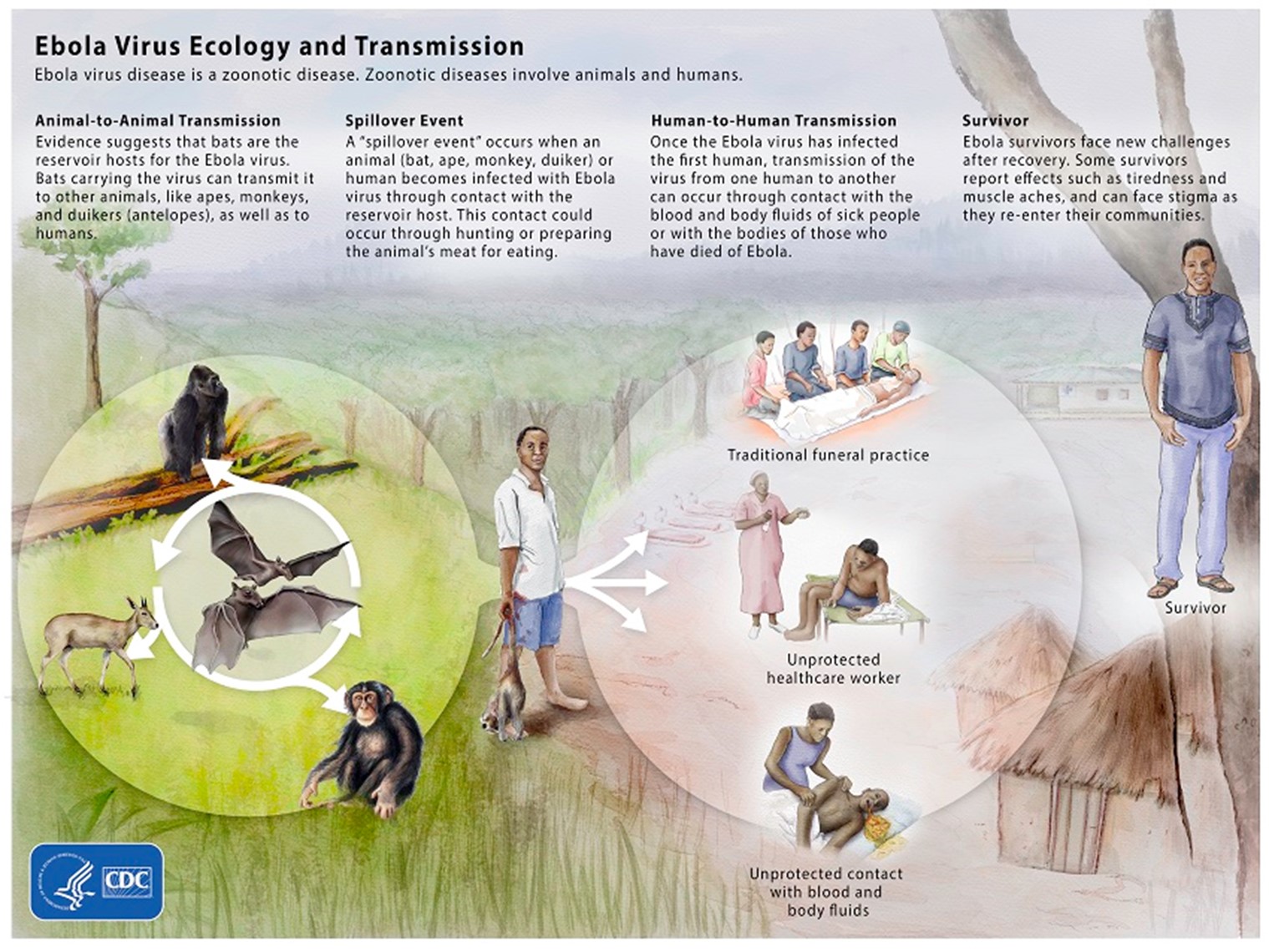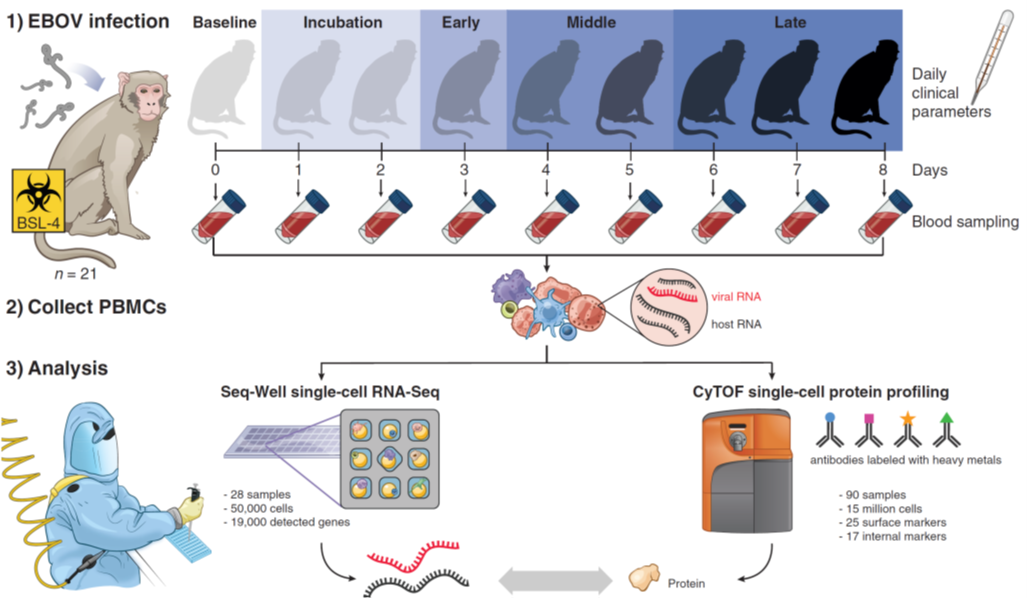2020-11-23 By Quick Biology
Ebola virus was first discovered in 1976, it has been infecting people, leading to outbreaks in several African countries. Ebola Virus Disease (EVD) is a rare and deadly zoonotic disease in human and non-human primates (Fig.1, ref1). Understanding the virus life cycle (e.g. host preferences/transmission, virus survival rate/stability in certain environments) helps us prevent infection. Understanding virus-host cell interaction can be the key to novel therapeutics or vaccines.
In Cell (Nov.2020), under BSL-4 containment, scientists from Harvard-MIT-Broad, National Institutes of Health used rhesus monkey as a disease model. They collected blood samples from a total of 21 rhesus monkeys at multiple days post-EBOV inoculation, extracted peripheral blood mononuclear cells (PBMCs) (Fig.2, ref2). By single-cell transcriptome profiling (100,000 transcriptomes) using Seq-well and CyTOF-based single-cell protein quantification (15,000,000 protein profiles), they dissected host-virus interactions and comprehensively catalog changes in cell-type abundance and cell state over the course of EVD. This is the first BSL-4 investigation of a pathogen with high-dimensional single-cell (RNA level and protein level) technology.
Highlights:
1. Interferon response is suppressed in infected cells but activated in bystander cells
2. EBOV represses antiviral genes and upregulates pro-viral genes in infected cells
3. Proliferative CD14– CD16– monocyte precursors expand in circulation during EVD
4. Identification of expression markers of EBOV tropism for circulating cells in vivo
Figure 1: Ebola Virus Ecology Graphic. (ref1)

Figure 2: Non-human primate model to study Ebola-cell infection. (ref2)

Quick Biology is an expert in next-generation sequencing applications. Find More at Quick Biology.
Reference:
- 1. CDC online: https://www.cdc.gov/vhf/ebola/resources/virus-ecology.html
- 2. Kotliar, D. et al. Single-Cell Profiling of Ebola Virus Disease In Vivo Reveals Viral and Host Dynamics. Cell 1–19 (2020). doi:10.1016/j.cell.2020.10.002



